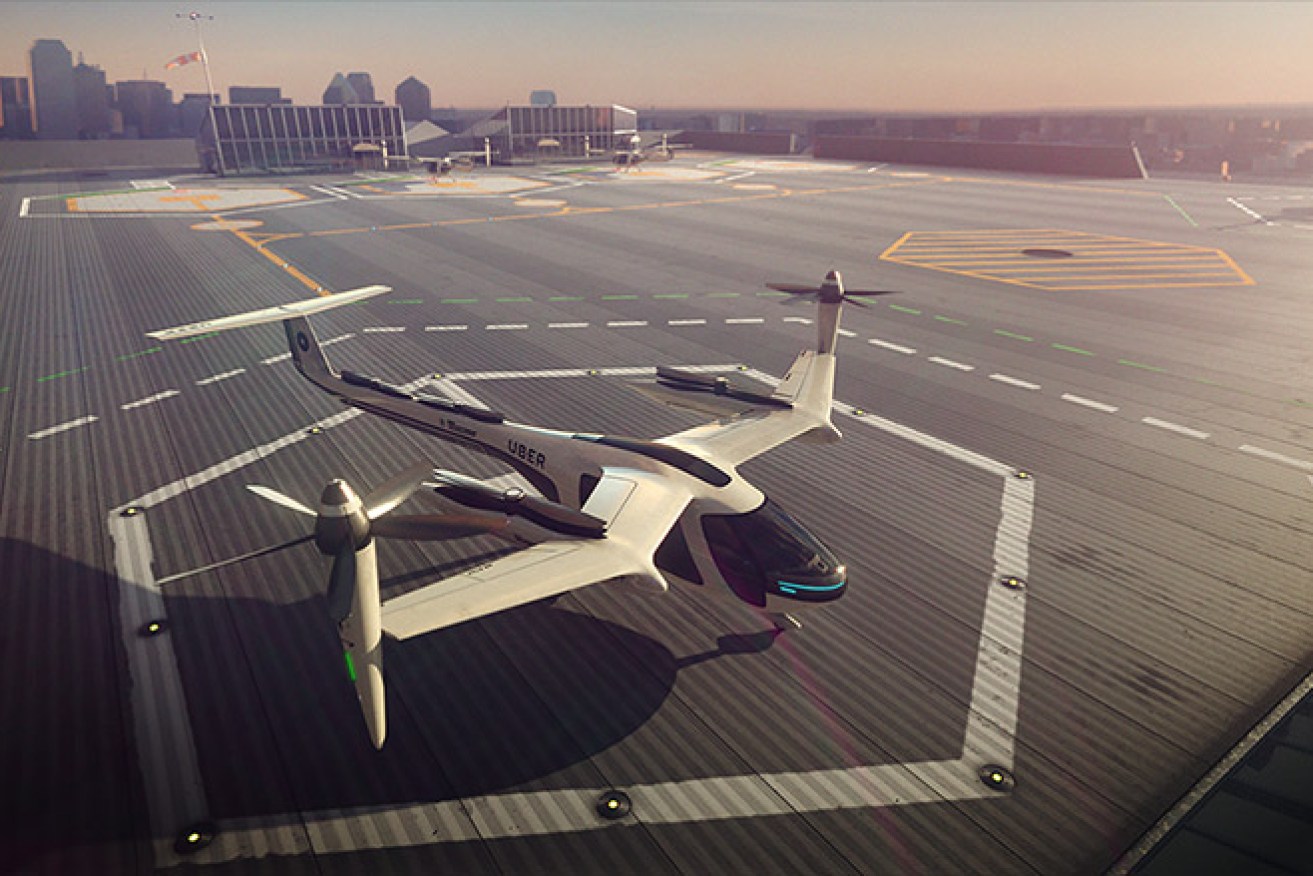Uber partners with NASA for flying taxi plan


Uber hopes to have flying taxis in the air by 2020. Photo: Uber
Ride sharing giant Uber has signed a deal with NASA as its plans to roll out autonomous flying cars takes off.
Uber will work with the US space agency to develop software for managing flying taxi routes, Uber’s chief product officer Jeff Holden told the Web Summit in Lisbon, Portugal on Wednesday night (AEST).
The project, dubbed Elevate, hopes to trial aerial taxis in Dallas, Dubai and Los Angeles by 2020.
Uber released a glossily produced promotional video demonstrating what using its aerial taxi service would look like from the perspective of a working mother taking a flight home from work.
In the video, the passenger books her flight through the Uber app and takes an elevator a an “Uber skyport” on the roof of a nearby building,
After using her smartphone to pass through a turnstile, the user is briefly weighed before being let to an aircraft that resembles a cross between a plane and a helicopter with fixed wings and tilt-prop rotors.
During the flight, she looks out of the window at the traffic below before arriving home to her family to the closing tagline: “Closer than you think.”
Uber’s Elevate vision:
NASA, which is yet to comment on the partnership, has previously announced it was working with a variety of companies to develop urban air mobility.
Uber first announced its plan for flying taxies in a white paper released last year,
Uber has been involved with regulatory issues around the world over its app-based ride-sharing service, and is hoping to avoid similar problems over its air plans.
“We are very much embracing the regulatory bodies and starting very early in discussions about this and getting everyone aligned with the vision,” Mr Holden said.
Despite NASA’s involvement, project Elevate faces significant regultory and technological hurdles before any pilot program can get off the ground.
Uber has said it envisages using electric, autonomous aircraft for the service with the ability to take off and land vertically, which do not yet exist.
Recent research by Gartner played down the prospect of flying, autonomous vehicles becoming reality in the near future given the daunting task of regulating the aircraft in existing air traffic control systems.
Professor David Dunn of the University of Birmingham was quoted by the BBC as saying while the technological issues could be overcome, opening up the airspace needed was another issue.
“There are problems about how such transport will be policed, insured and registered,” he said.
Uber plans to develop the software to manage the flying taxi network with the vehicles to be built primarily by Pipistrel Aircraft.
– With agencies








